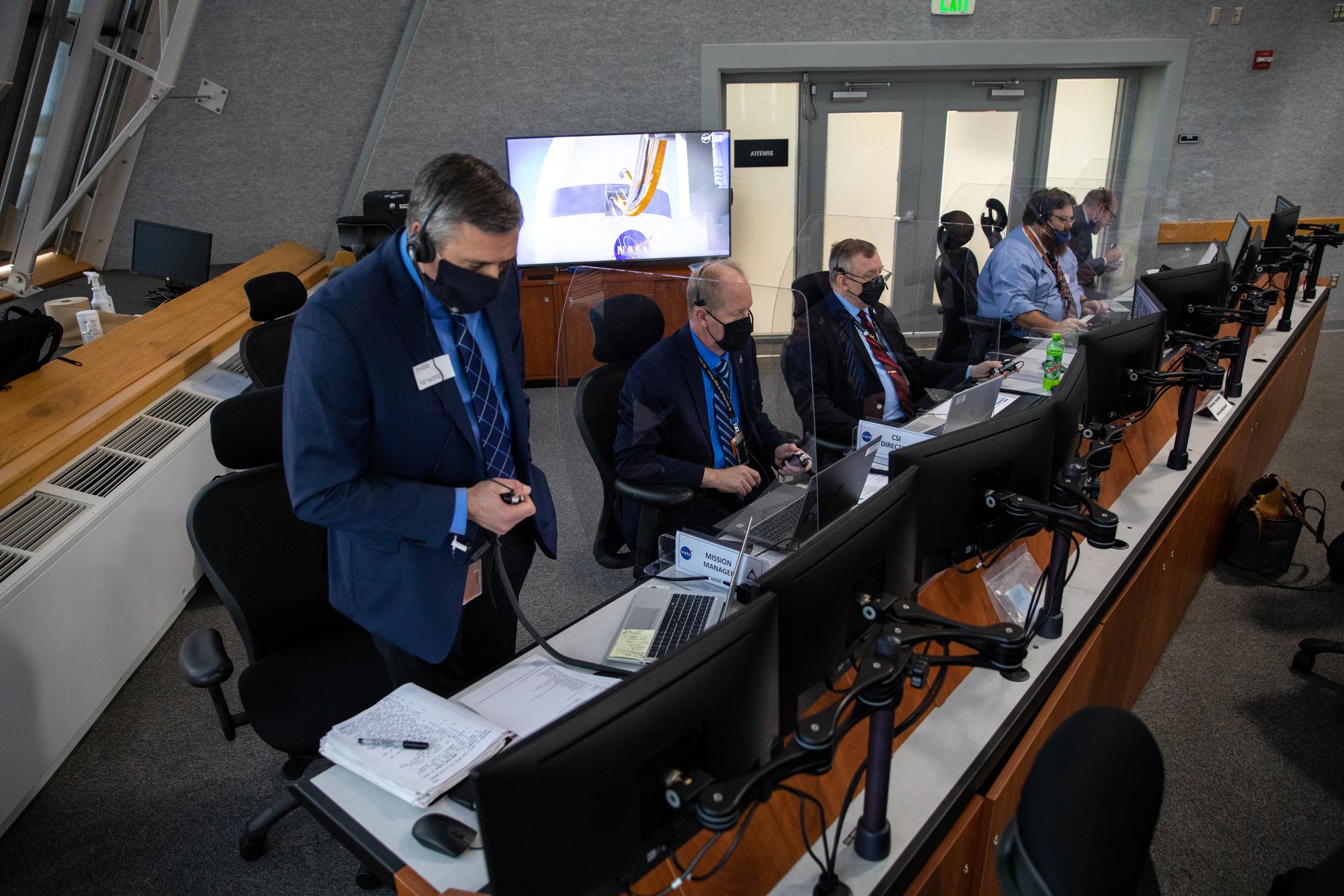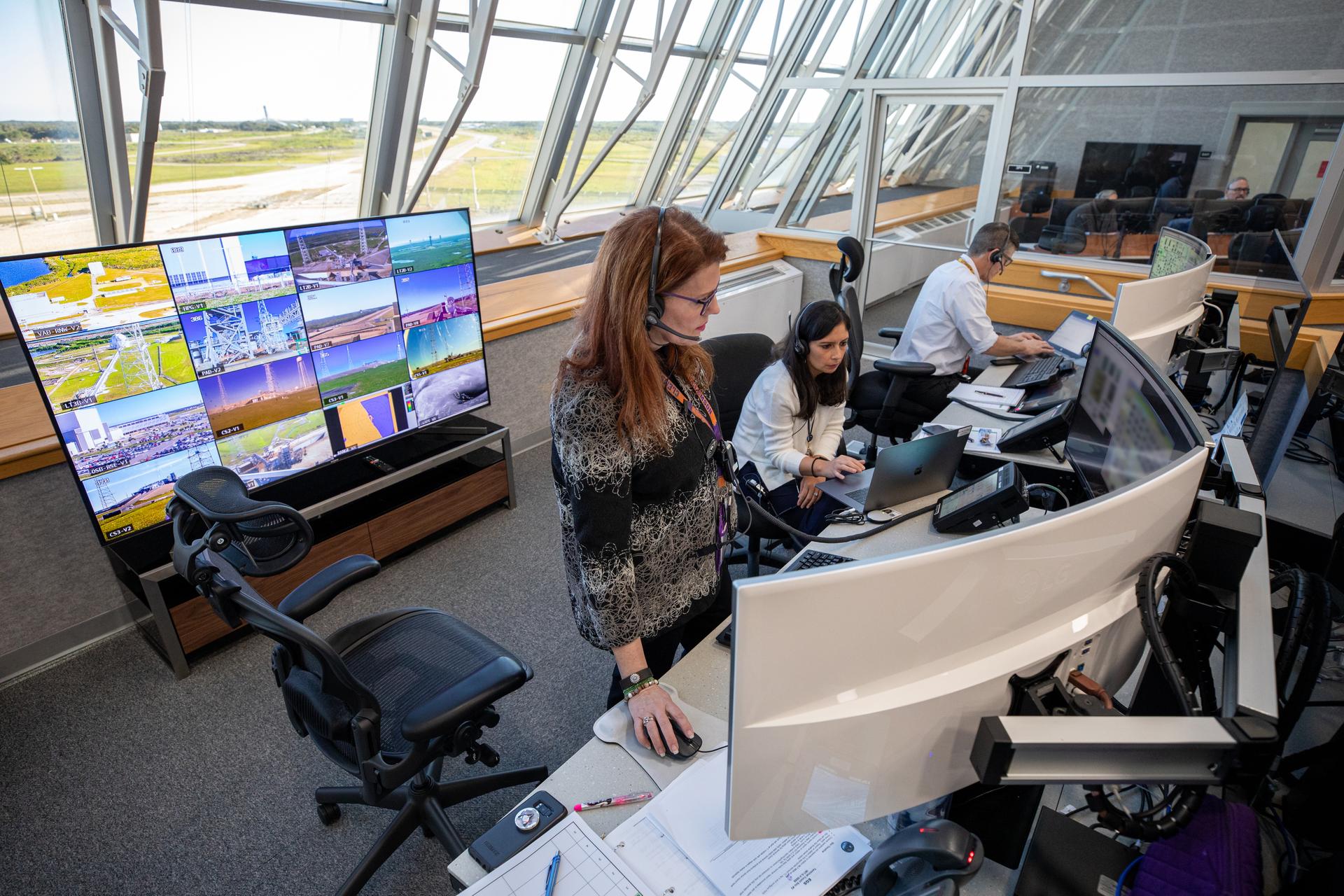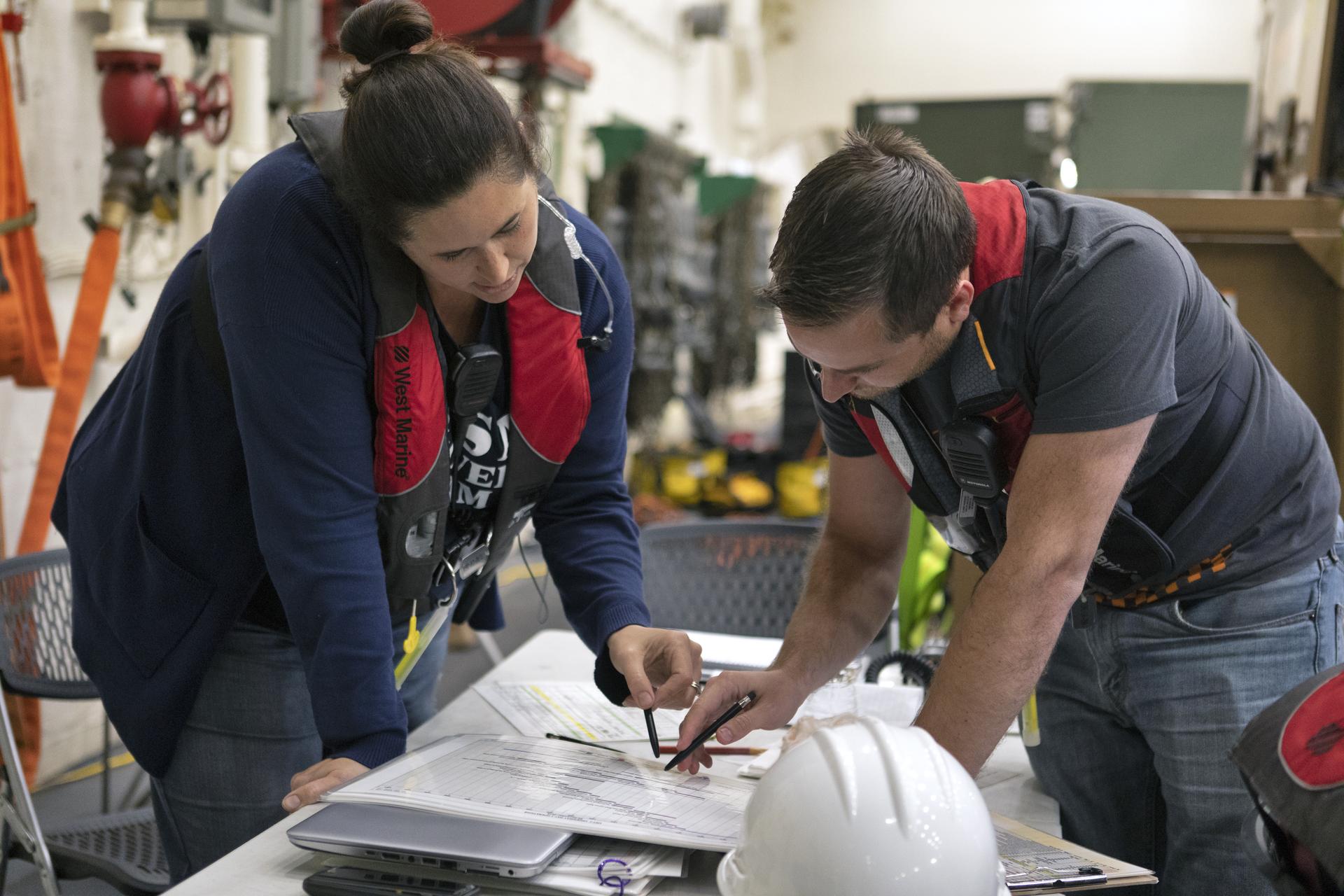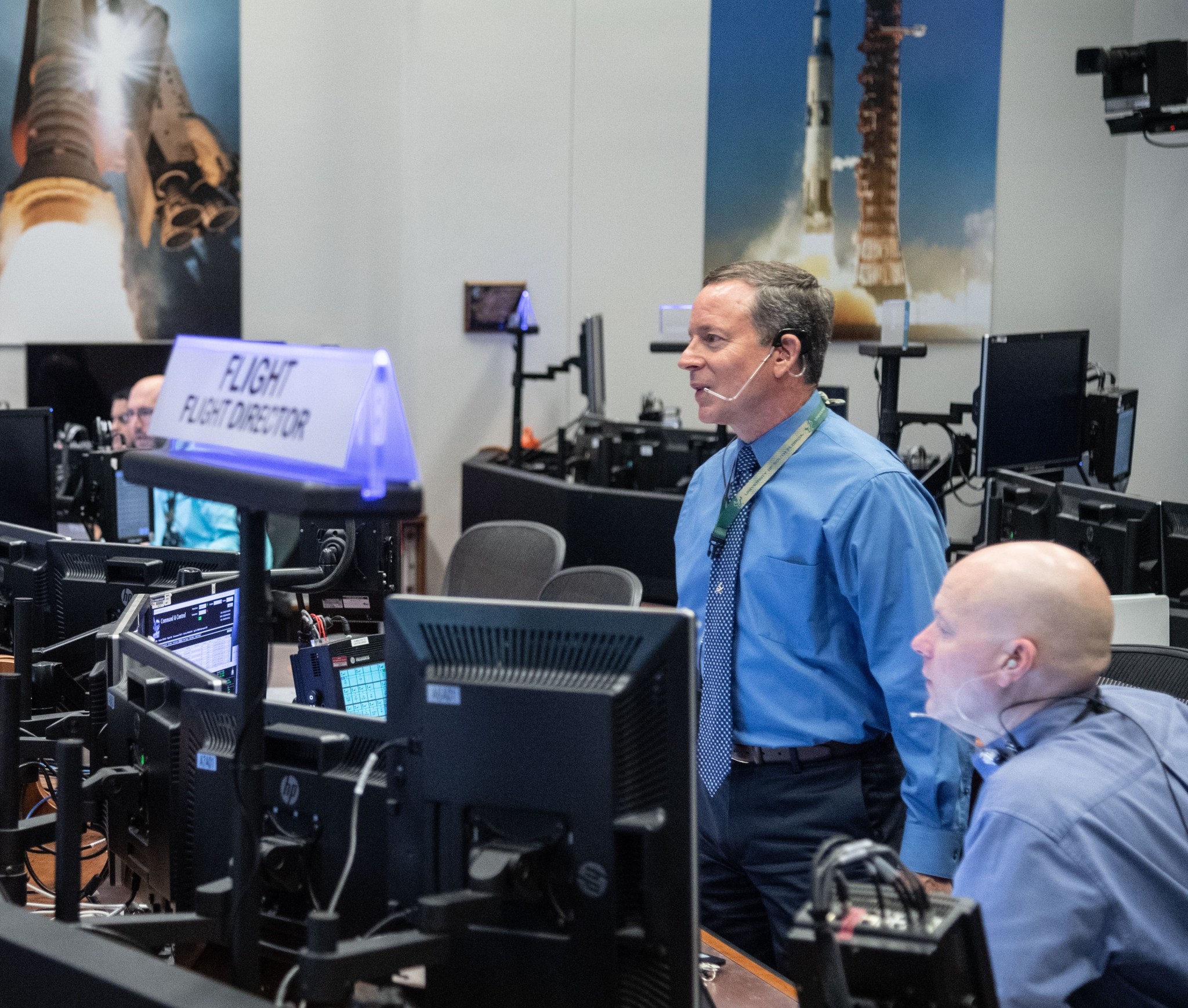The first flight of NASA’s Space Launch System (SLS) rocket and Orion spacecraft will not have a crew of astronauts on board, but there are several experienced teams of people behind the mission to ensure the success of the first SLS launch and Orion’s first trip around the Moon.
The primary teams responsible for supporting the mission include the mission management team, the launch control team, the flight control team, and the landing and recovery team. Throughout the mission, the mission management team is responsible for reviewing mission status and risk assessments for issues that arise, and making relevant decisions. The launch control, flight control, and landing and recovery teams are responsible for operations throughout the mission phases. Additional support teams also provide technical expertise to the mission management team and each of the operations teams throughout the mission.
Mission Management Team
The mission management team for Artemis I is led by the Artemis mission manager, Mike Sarafin. With more than 28 years of human spaceflight experience, Sarafin began his career as a guidance, navigation and control mission controller working on the space shuttle and became a NASA flight director supporting the space shuttle and the International Space Station. He also was the lead flight director for Orion’s first flight test in 2014 before assuming his current role.
>>Related: Listen to Mike Sarafin
Sarafin will provide oversight and be responsible for critical decisions during the mission, with support from team members and advisors with technical expertise in various areas. Throughout the mission, Sarafin will conduct polls at key decision points, providing direction for the relevant operations team. If circumstances during the flight go beyond the established decision criteria or flight rules outlined ahead of the mission, the team will assess the situation based on the information available and decide how to respond.
The mission management team will convene two days before launch to perform a launch readiness review. Team members will review the status of flight and ground systems, as well as current and forecasted weather for launch and recovery periods, followed by Sarafin’s first poll of the mission for a “go” or “no-go” to continue with the mission. On launch day, the mission manager will poll the team for a “go” to load cryogenic, or supercold, fuel into the rocket’s tanks and again to proceed with activities in the last 10 minutes of the countdown, called the terminal count.

Once in space, the mission manager will conduct periodic polls, including a poll to commit to the outbound powered flyby burn, which starts the process to enter the distant retrograde orbit as Orion passes within 62 miles of the lunar surface and then out to about 40,000 miles past the far side of the Moon, traveling in the opposite direction the Moon travels around Earth. Sarafin again will poll the team to commit to a departure burn to exit the distant retrograde orbit and return to Earth. As Orion makes its trek back to Earth, the mission manager will poll the team once more to commit to the positioning of recovery assets for entry, descent, and landing.

Launch Control Team
The launch director, Charlie Blackwell-Thompson, leads the launch control team and has the overall responsibility for carrying out the launch countdown and operations leading to lift-off from the Launch Control Center Firing Room 1 at NASA’s Kennedy Space Center in Florida. Blackwell-Thompson has more than 30 years of experience supporting the space program, beginning her career in payload processing, integrating and testing, and then as part of the launch team where she previously served as NASA test director for launch and landing on shuttle missions.
>>Related: Listen to Charlie Blackwell-Thompson
The launch director and her team are responsible for conducting launch countdown operations beginning with the call-to-stations about two days before launch. The countdown includes flight systems configuration for launch, propellant loading, terminal countdown, and launch. Blackwell-Thompson also is responsible for managing the development of launch countdown plans, including launch and scrub turnaround procedures and schedules, as well as training and simulations for the team.
On launch day, Blackwell-Thompson and her team are responsible for reviewing the launch commit criteria and ensuring that the rocket is ready for flight operations. Launch commit criteria consist of measurement ranges for flight and ground systems and are used to verify the mission systems are in a safe configuration to support launch. The launch control team is responsible for monitoring and controlling the rocket prior to ignition and lift-off. Following the command to fire the solid rocket boosters, control of the mission transfers from the launch control team to the flight control team in the Mission Control Center at NASA’s Johnson Space Center in Houston.
Flight Control Team
From mission control, the flight control team has overall responsibility for flight operations from booster ignition to splashdown – including ascent, on-orbit operations, and reentry. The lead flight director, Rick LaBrode, is responsible for building the mission timeline, developing procedures and flight rules that guide spacecraft operations, training the flight control teams, and carrying out the plan. LaBrode has worked in flight operations for more than 35 years, initially as an instrumentation and communications flight controller and then as a flight director for both the space station and the space shuttle.
On LaBrode’s team, Judd Frieling is the flight director who specifically responsible for the ascent and entry phases of the mission. Frieling has worked in flight operations for 24 years as a space station flight controller, ascent and entry flight controller for the space shuttle, and as a space station flight director. During ascent, Frieling and the team will monitor the launch performance of the SLS engines, boosters, and propulsion stages – as well as Orion’s performance– as the rocket clears the launch pad and climbs toward orbit. After Orion separates from the interim cryogenic propulsion stage and begins the outbound coast phase, responsibility will shift from Frieling to the next on-duty flight director.
>>Related: Listen to Rick LaBrode and Judd Frieling
With mission control operating 24 hours a day over the course of the mission, which is expected to last several weeks, several flight directors will oversee the flight controllers in shifts. The flight control team will use real-time telemetry to command the spacecraft as it carries out flight test objectives through the mission. Flight controllers also will monitor technical and safety aspects throughout the mission and re-plan the mission as necessary if circumstances require a change in trajectory.
Each flight director has decision authority for the mission during that shift. Three days prior to Orion’s return to Earth, Frieling will prepare for Orion’s return, review weather predictions, and recommend a landing site to the mission management team. During entry, the team tracks Orion as it speeds through the atmosphere for a parachute-controlled splashdown in the Pacific Ocean.
Landing and Recovery Team

The NASA recovery director, Melissa Jones, leads the landing and recovery team and has the overall responsibility for the Orion recovery operations. Jones has more than 15 years supporting NASA’s human spaceflight efforts, including the shuttle and space station, and previously served as the lead system engineering and launch site integration manager in NASA’s Commercial Crew Program.
>>Related: Listen to Melissa Jones
Jones has led the landing and recovery team through the development of hardware, procedures, testing, and training required to perform recovery operations. Under her leadership, an interagency team will recover the Orion capsule when it returns to Earth off the coast of San Diego, California. The interagency landing and recovery team consists of personnel and assets from the U.S. Department of Defense, including Navy amphibious specialists and Air Force weather specialists, engineers and technicians from Kennedy and Johnson, as well as contractors Jacobs and Lockheed Martin.
About five days before splashdown, the landing and recovery team heads to a midway point between shore and where Orion is expected to land. Following Sarafin’s final poll of the mission management eam to proceed with entry, decent, and landing, the Navy ship with the team will continue its approach. Orion will enter Earth’s atmosphere traveling at 25,000 mph, and atmospheric drag will slow the spacecraft to 300 mph, followed by parachutes to reduce that speed to approximately 20 mph before splashing down in the Pacific Ocean where the recovery team awaits. In addition to securing the spacecraft, Jones’ recovery team also will attempt to recover hardware jettisoned during descent, such as the forward bay cover and the three main parachutes.
The uncrewed Artemis I flight test is the first in a series of increasingly complex missions to the Moon. This team will work together to ensure a successful mission and prepare for the first flight with astronauts aboard, Artemis II. Through Artemis, NASA is working to land the first woman and the first person of color on the on the Moon in preparation for missions to Mars. The SLS rocket and Orion spacecraft, along with the Human Landing System and the Gateway in orbit around the Moon, are the agency’s backbone for deep space exploration.


























